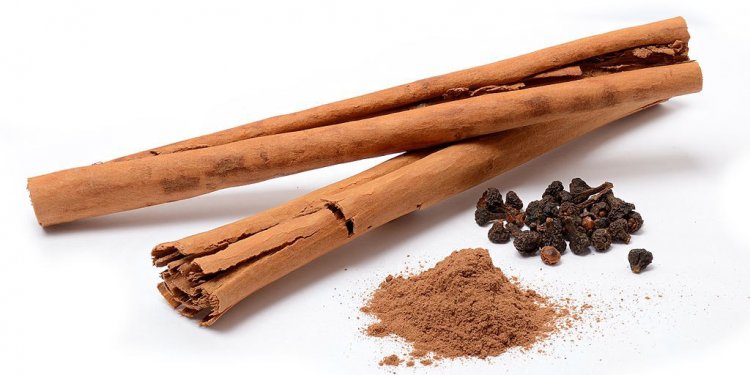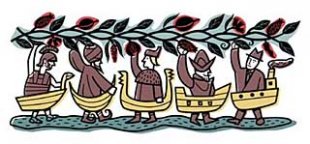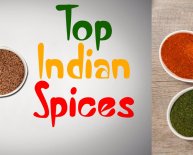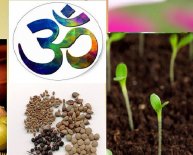
History of Indian spices
 SOON after dawn on 21st 1498, Vasco da Gama and his team arrived at Calicut following the first direct ocean voyage from European countries to Asia. If record's modern day has a new, this is it. European countries's lack of knowledge of, and isolation from, the cosmopolitan intellectual and commercial lifetime of Asia had been finished forever. With vessels, weaponry and a willingness to make use of all of them both, the nations of Europe were about to colonise the remainder world. To guide this expansion, its merchant classes would create brand new types of commercial credit additionally the very first great corporations, vital components of capitalism's os, and spread their trading companies over the seven seas. And just what did the males shout while they emerged ashore? “For Christ and herbs!”
SOON after dawn on 21st 1498, Vasco da Gama and his team arrived at Calicut following the first direct ocean voyage from European countries to Asia. If record's modern day has a new, this is it. European countries's lack of knowledge of, and isolation from, the cosmopolitan intellectual and commercial lifetime of Asia had been finished forever. With vessels, weaponry and a willingness to make use of all of them both, the nations of Europe were about to colonise the remainder world. To guide this expansion, its merchant classes would create brand new types of commercial credit additionally the very first great corporations, vital components of capitalism's os, and spread their trading companies over the seven seas. And just what did the males shout while they emerged ashore? “For Christ and herbs!”
The proselytising part turned into disappointingly unneeded: there were already an abundance of Christians residing in the Malabar shore, following the arrival of a Syrian contingent numerous hundreds of years earlier. But in terms of spruce went, Da Gama and his crew were directly on the funds. After that, as today, Calicut had been a gateway into world's best pepper-growing region—indeed it was why the Syrians had relocated here to start with. As such it absolutely was in the middle of spruce trade, a network of ocean tracks and entrepôts when you look at the making for millennia: the world economic climate's oldest, deepest, most fragrant origins.
For many thousands of years before Da Gama and hundreds of years afterwards, the key of spice trade ended up being easy: great demand and highly managed offer. A number of that control had been enforced through political power or contrived through mercantile guile. Some was simply a present from gods of environment and botany. Legend features it that, before leaving, Da Gama dared to ask the zamorin of Calicut whether he might take a pepper stalk with him for replanting. Their courtiers were outraged, nevertheless the potentate stayed calm. “You may take our pepper, but you'll never be capable simply take our rains.” He understood how important the location's strange twin monsoon, both stages which bring hefty rainfall, was to its fickle crop. Even today, though areas in other places grow pepper, Kerala reigns supreme with its high quality, dominating the high end regarding the market.
If those important downpours have never cleaned away what passes when it comes to road, a couple of days travel into Kerala's rolling Western Ghats, in which waterfalls roar and herds of crazy elephants loom from soft mist, brings you to the ancestral residence of Piper nigrum. High up in the center of no place, Iddicki creates the best pepper on earth, its peppercorns always dark and heavy, bursting with taste. Its vines wind their particular way around almost every tree coming soon, climbing ten metres or higher into the sky.
After such a trip you may expect Iddicki to be a sleepy backwater. With its own idyllic way, though, it is a boomtown worth the Wild West. Fancy jeeps clog the thin roads; stores overflow because of the newest needs of outlying life, like washing machines and stereos. Large satellite dishes shove their pricey snouts at heavens out of each and every other house. The earth's largest stashes of gold is within rural India, also to judge by its glittering jewelry stores this city has significantly more than its reasonable share. “Black silver, ” explains one pepper farmer with an easy smile, is fetching top prices on the globe market.
Until such time you speak with them about that globe market, Iddicki's residents appear just like farmers anywhere else when you look at the developing world—scraping a full time income at the margins associated with the marketplace economic climate. Thomas Thomas, one of several several hundred thousand small-holders who grow Kerala's pepper, is a good example. A humble guy associated with earth, he speaks softly and still wears their dhothi, a traditional loincloth, when he tills their soil. However with some prompting he will provide an analysis of the pepper marketplace sophisticated adequate to make a Chicago commodities investor blush: present prices, the direction associated with futures market, the expense versus great things about holding stocks. A nearby spruce dealer describes over a feast of fiery snapper and spiced tapioca at his roomy bungalow that “there is complete price-discovery within marketplace.” The farmers whom sell their plants to him (for resale in the big market in Jewtown, with changed Calicut while the hub of Kerala's pepper trade) do so utilizing the most recent nyc and Rotterdam costs available. One specifically sharp farmer, he moans, is eliminating the middlemen altogether and shipping their stocks straight to European countries.
The global aspect of the dealership's trade is nothing brand new. As far back as 2600BC, you will find documents of this Egyptians feeding spices obtained from Asia to labourers building the great pyramid of Cheops, to give all of them energy. Archeological research implies that cloves were quite popular in Syria soon after, despite the fact that, like nutmeg and mace, they came only from the spice countries of what's today Indonesia. A long time before the 6th century BC, when Confucius advocated the usage ginger, the Chinese had been acquiring spices from tropics. European countries imported all of them before Rome had been launched.
These days herbs are mainly flavourings for meals, but a hundred various other utilizes have added to your need through record. In old Egypt cassia and cinnamon fetched a high cost simply because they were essential for embalming; so also were anise, marjoram and cumin, always wash out the innards for the worthwhile dead. Hammurabi's legal code, which called for extreme punishment of sloppy or unsuccessful surgeons, performed much to encourage the usage of medicinal spices in Sumeria.
Particularly in Europe, though, meals came to make a difference many. Herbs protect, and they also make the defectively preserved palatable, masking the appetite-killing stench of decay. After bad harvests plus cool winters the thing that kept hunger from increasing had been greatly salted meat—with pepper. And there was clearly never an adequate amount of it. Therefore pepper began the organization with gold it continues to have in the streets of Iddicki, usually at a one-to-one exchange rate. Being call-off their particular siege of Rome in 408AD, the Visigoths demanded a bounty in gold, silver and pepper. In the centre Ages plague put into the demand for medicinal herbs; a German cost table through the 14th century sets the worthiness of a pound of nutmeg at seven fat oxen. Simultaneously “peppercorn rents” had been a significant way of working. Once the Mary Rose, an English ship that sank in 1545, grew up from the ocean flooring in 1980s, virtually every sailor was discovered with a number of peppercorns on their person—the many lightweight store of price offered.

















